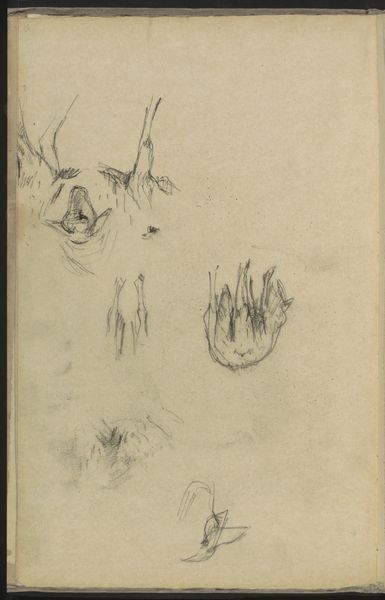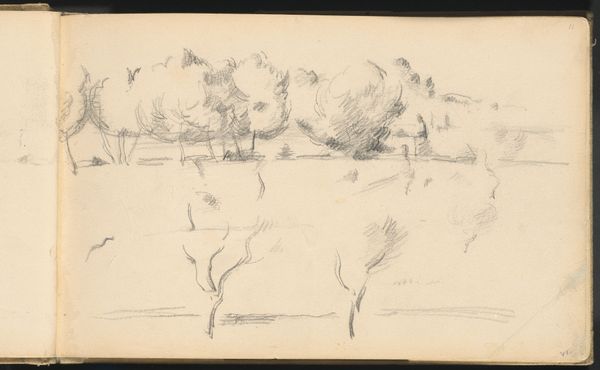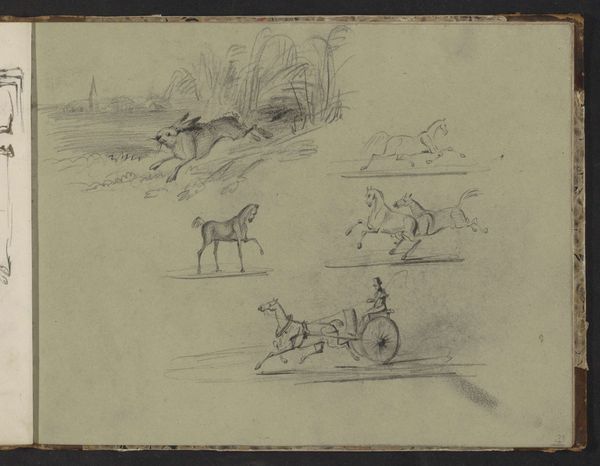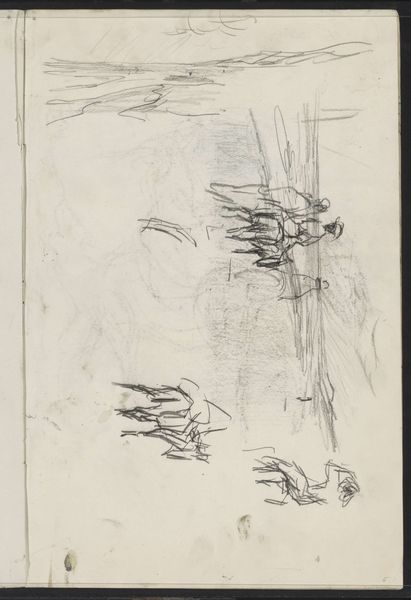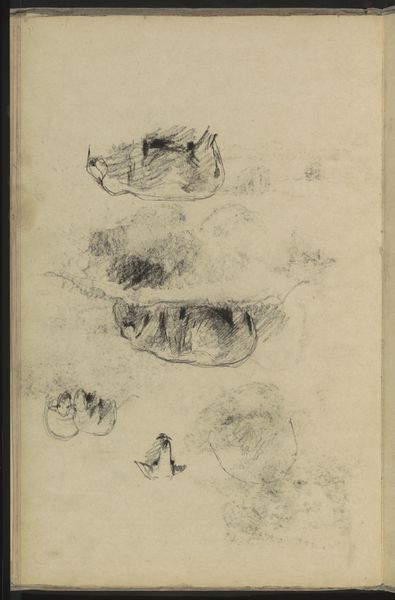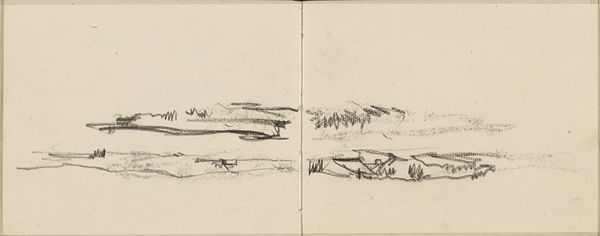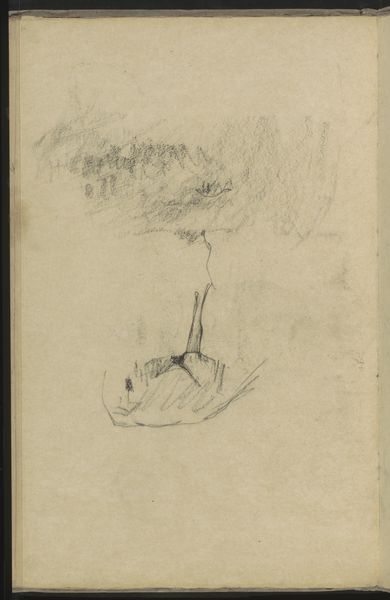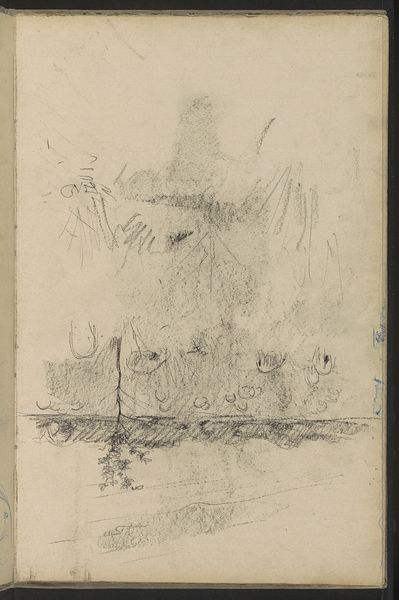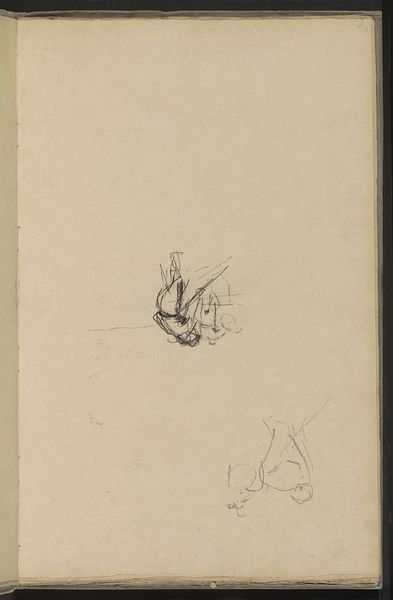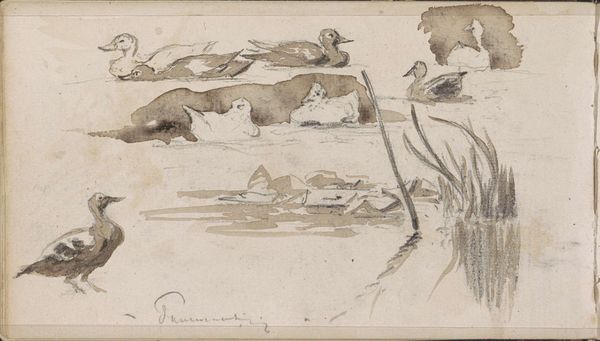
drawing, pencil
#
drawing
#
pencil sketch
#
landscape
#
pencil
#
sketchbook drawing
#
realism
Copyright: Rijks Museum: Open Domain
Editor: This is "Studieblad met schapen, deels in een landschap," or "Study Sheet with Sheep, partly in a Landscape," by Willem Witsen, likely created between 1884 and 1887. It's a pencil drawing currently held at the Rijksmuseum. The sketches have a kind of raw energy; you can almost feel the artist's hand moving across the page. What can you tell me about it? Curator: Considering this work through a materialist lens draws attention to the very means of its production. Pencil on paper: these readily available materials place the work outside the realm of precious, elite art objects. Witsen's rapid strokes, the visible process of sketching, reveal the labor involved in image-making. It is far from the “finished” or polished painting we might expect from the period. What was the societal role of representing rural labor and resources? Editor: So you are looking at the accessibility of the raw materials? Does the ease of production democratize art creation or devalue the end product? Curator: That’s exactly the question! Witsen using something as common as a pencil implicates broader social concerns, especially within the art world. During this period, academic painting still reigned supreme, valuing oil paint and detailed realism above all. How does Witsen’s choice to render these pastoral scenes in this seemingly nonchalant medium challenge those assumptions? Editor: So, he’s using humbler materials to depict a humbler subject – literally, sheep and landscapes – creating a commentary on what's considered worthy of artistic attention? It feels more immediate and authentic because of that. Curator: Precisely. The very materiality becomes a statement. It allows us to rethink our assumptions about artistic labor and value. Now, consider where these sheep were likely located and how they would eventually be used in a Capitalistic framework. What implications does that add? Editor: This has really given me a different way to look at what might have seemed a simple sketch. Thinking about the material choices as a deliberate statement... it changes everything. Curator: Agreed. By acknowledging the material and societal dimensions, the artistic creation becomes intertwined with history and culture.
Comments
No comments
Be the first to comment and join the conversation on the ultimate creative platform.
